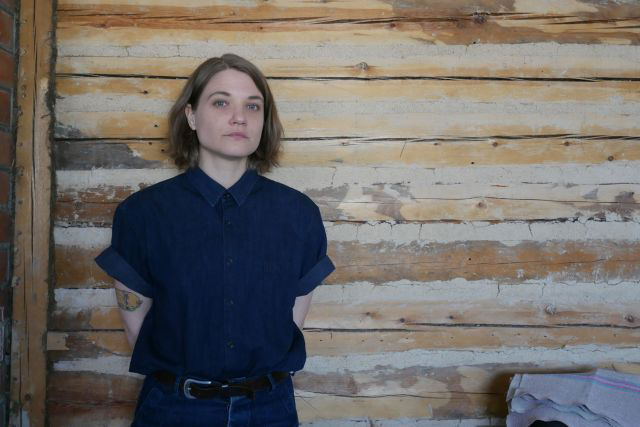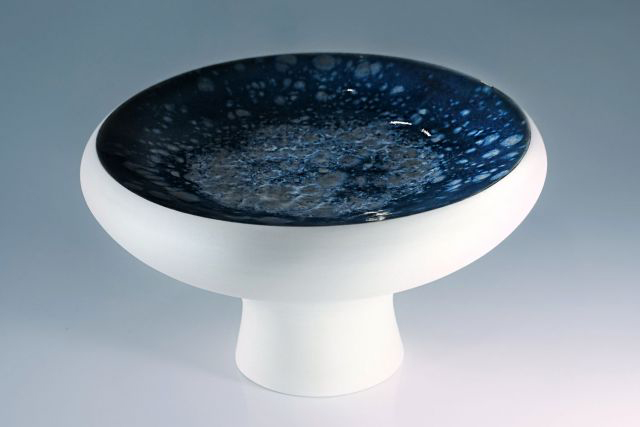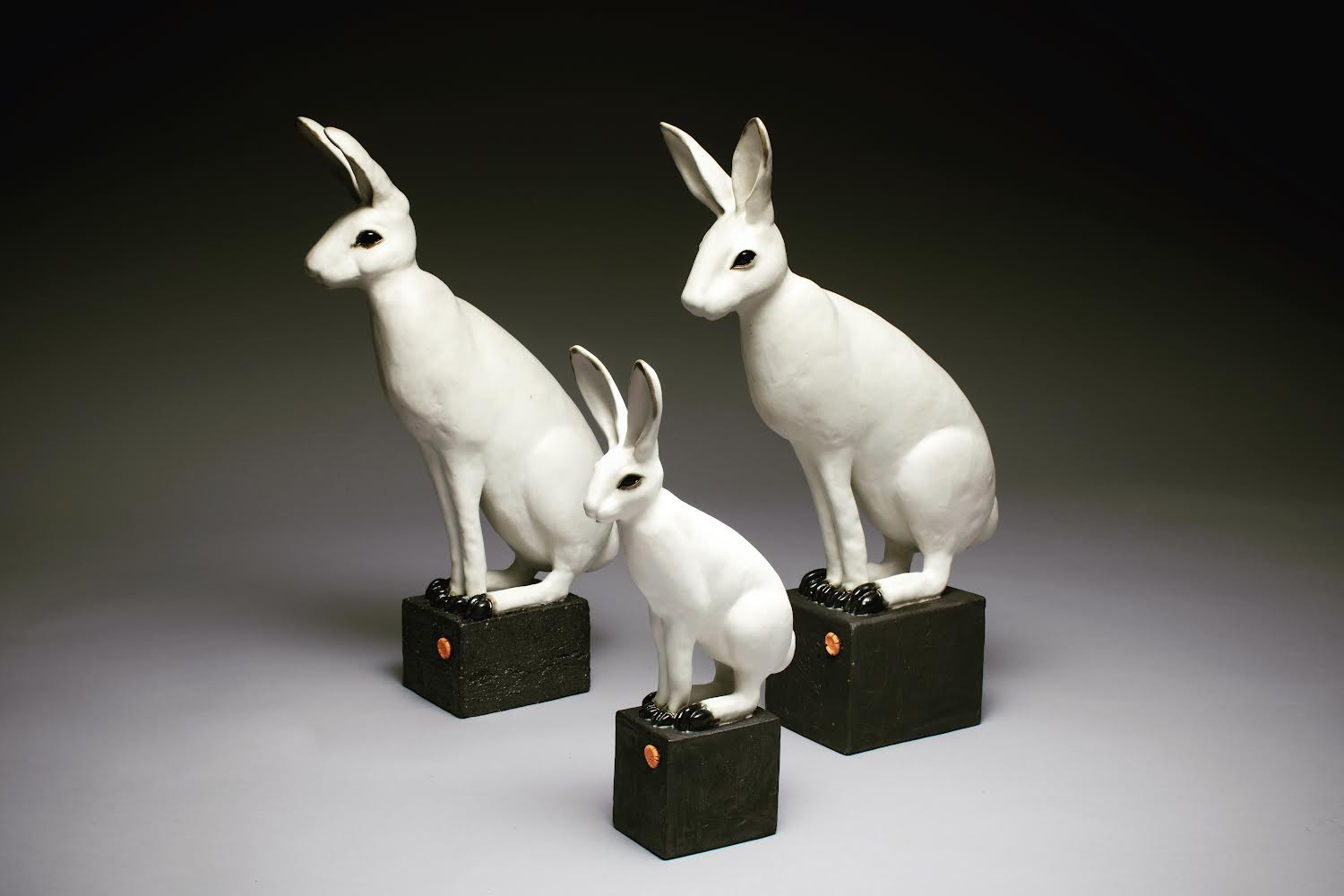

Ida Isak Westerberg is a textile artist from Älvsbyn, Sweden, who creates woven textile sculptures with a focus on sustainability. The whole story begins with Westerberg working as a preschool teacher. “I was quite tired from working all the time and wanted a year for myself pursuing what I really wanted. Back then I was embroidering a lot during my spare time, so I decided to study textile crafts for a year. I applied and got accepted at the school Handarbetets vänner (Friends of handicraft), even though they told me there was a lot more weaving than embroidery. And suddenly, the loom won both my heart and enthusiasm”.
Nowadays, Westerberg works with very traditional Swedish weaving techniques with a contemporary twist, and is especially fond of “rya,” where both wefts and knots are used while weaving, in order to produce hairy wool rugs. “I don’t want my work to reflect history” Westerberg says, “I want it to be contemporary with a hint of heritage”.

Have textiles always been a part of your life?
My grandmother used to knit clothes for my toys while my mother sewed clothes and dance costumes for my shows. As a teenager, I designed and sewed my own clothes. So yes, textiles have always been part of my everyday life. Later on, it was embroidery that stole my heart, followed by weaving.
Where do you find your motivation?
The queer community and Norrbotten’s nature are the two things that give me strength, purpose, meaning in life—I would say. Everything and everyone have the right to be whoever they are and to love whoever they love.
How is your work sustainable?
For me, ‘well made’ means something that is intended to last and is easy to mend, in case it is damaged or worn. It’s also about having a profound knowledge of the whole process and a production that has a low impact on the ecosystem.
What do you find fascinating about weaving textiles?
I love the fact that, when you start working, it’s almost impossible to predict how the finished product will look like. There are so many different steps involved within weaving that even a small detail can make the difference, strongly impacting the result.

Lotta Kvist—Nordic Nature
Lotta Kvist is a ceramicist originally from Malmö, nowadays based in Öjebyn, Sweden, where she runs a ceramic workshop equipped with two throwing wheels and two kilns. As she says, “It’s a small workshop, but it works perfectly for me”. There, she follows all the process; from designing to glazing the ceramics she creates.
A self-taught artisan, the first handcrafted object she produced “was a hand pinched little bowl. I let it dry and then oil-painted it in the garage. That happened 50 years ago, and after all that time, my mother still has it”. Since then, Lotta has perfected her artisan skills by taking classes and attending courses, both in Sweden and abroad.

Do you have a mentor?
Well, he wasn’t exactly my mentor, but I was inspired by a master in ceramics. Yngve Lundell was my art teacher at school. He was more of a “traditional” artist/sculptor, but he introduced me into this world. You can see some of his bronze sculptures in Malmö.
How does your style reflect your homeland?
Northern Sweden is covered with snow and ice in winter, while in summer it becomes a verdant green. In that way, it’s very simple and clean. I try to keep my design like that: minimalistic, simple and clean.
Do you have a preference in colours and subject?
Animals in general, but especially hares have become one of my hallmarks. I am fascinated by their way of dealing with the environment, the changing colour of their fur according to the season. I often glaze ceramics with bright colours that remind me of nature.
How do you create your handcrafted ceramics?
I sculpt many of my creations using the traditional technique of the throwing wheel. The result can be very rustic, but I usually throw thin and elegant objects or double-walled forms that give the items an organic look. I also make hand-built sculptures. Then I finish them with crystalline glaze which I learnt to master in Italy.

Eva Hagström—Sea and Sky Views
In Töre, Sweden—the northernmost part of the Gulf of Bothnia—is where you can find textile artist Eva Hagström. Dropping by Hagström’s studio is already an experience in itself due to its striking setting. Once arrived in Siknäs, it is easy to spot a traditional red wooden building with vivid blue details, surrounded by an incredible view overlooking the Baltic Sea. It is here that Hagström works almost every day, hand or loom weaving textiles, embroidering and woodcarving. Looking at the whole picture, you can really see where her inspiration comes from. Groups of visitors are welcomed into an astonishing environment full of creativity and filled with the tools of the trade—looms, threads, tapestries, textile samples and sketches. Moreover, if you are interested in buying Hagström creations, you can visit the shop, which is located close by.

Why did you decide to become a textile professional?
Artisanship runs in my family: one of my grandmothers had a loom with which she produced carpets on commission, while the other was a dressmaker. As a child, I used to play with all their yarns, fabrics, buttons, so I think that taking this road was a natural choice.
What has influenced your career?
My encounter with the artists Roland Larsson and Sture Berglund who were my first mentors. Then at Konstfack, May Wellner’s textile course, as well as Arne Isaksson and Fritz Sjöström’s art lessons had a huge influence on me. I am also inspired by what surrounds me here in the north—from nature to music, from literature to people.
What are the pros and cons of being an artisan?
I consider myself privileged to work with textiles in my own studio, and to create what I like the most, fulfilling my passion. However, despite most people thinking that you are just living your dream, you do have to deal with other issues such as performance anxiety, taking decisions all by yourself and earning an income.
Do you consider the textile craft at risk?
Since I opened my studio in the 1980s, the interest towards craftsmanship and especially textile handicraft has been increasing. Weaving has become more relevant as it relates to the contemporary practices of recycling, reusing and sustainability.

Göran Söderström—A Jewel of the North
Göran Söderström is a jeweller who works in silver and gold in Lannavaara, Sweden. His interest began in his teenage years, when he took a workshop founded by his uncle. “The first time I really understood that silver and gold were ‘my materials’ was when I joined a course at Kristallen in Lannavaara. That week meant a lot to me, because I saw all the potential of working with metals,” he says. It was then that Söderström started out in jewellery designing, making and stone polishing. A long apprenticeship awaited him after that, but he eventually succeeded in his goal of becoming a goldsmith. He now has his own workshop in Lannavaara, a small village located above the Arctic Polar Circle, where he designs and creates gold and silver jewellery with gemstones, as well as teaching stone polishing and goldsmithing at Kristallen.

After your first steps at Kristallen, did you train elsewhere?
That was just the beginning. I took a two-year course in silversmithing and jewellery making at Leksands folkhögskola, in the Swedish region of Dalarna. Then I attended the goldsmith school in Copenhagen, becoming a qualified goldsmith. I also practised at the renowned Juhls silver gallery in Kautokeino, northern Norway.
When did you start your own company?
My workshop is located in Lannavaara, the small village where I was born. I opened it in 1998, but at that time I was working full time as a teacher at Kristallen. My own company became more active in 2006, and it still is.
What inspires you the most?
Life! I am inspired by everything I do, trips I make, the people I meet, but also the nature I live in. Sometimes I find a nice stone and see what I can do with it. Some of my inspiration comes from Sami culture and traditions, which happens to be my cultural identity too.
Which techniques do you like to use?
I like to combine classic and innovative approaches, being a traditional goldsmith who creates wedding rings but also an artisan who designs totally different, unique things. For example, I find stone setting and filigree very interesting, but sometimes I cast jewellery out of a seed or a flower.
Credit: Originally published as part of the Homo Faber Guide, curated by Michelangelo Foundation.
This story is part of the Sweden Spotlight. View more content from the Spotlight here.

